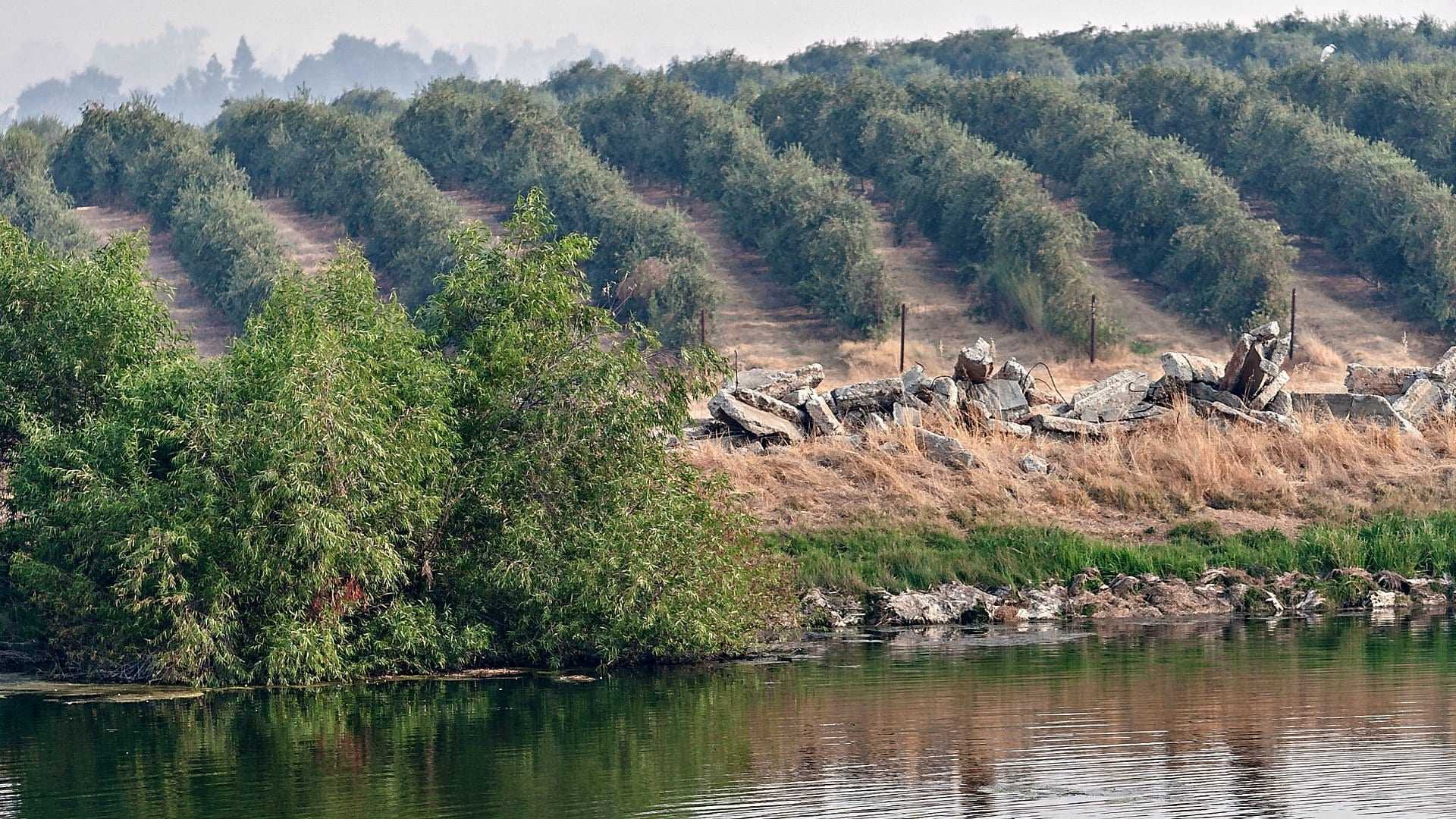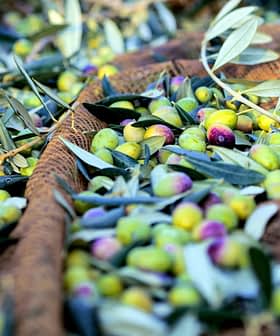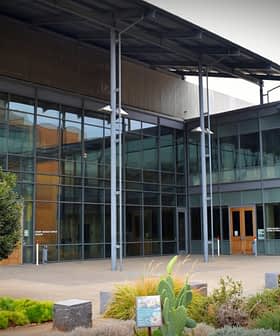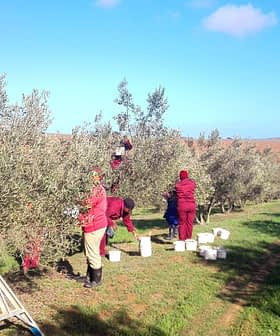California Olive Farmers Embrace Regenerative Agriculture to Combat Climate Challenges
After the initial investment, California farmers say regenerative farming practices enhance soil health, fight pests and improve oil quality.
 AI-generated image
AI-generated image California farmers are seeking ways to adapt to the state’s hot and dry climate despite a wet 2023. Olive farmers are turning to regenerative farming practices to improve soil health and mitigate climate change impacts, with the largest olive oil producer in North America leading the way in implementing these strategies. The long-term goal is to reduce environmental impact and improve the quality of olive oil through regenerative practices, with initial investments leading to cost savings and increased farm resilience over time.
Despite California’s unusually wet 2023, farmers continue to look for ways to mitigate the effects of the state’s increasingly hot and dry climate.
While summer rainfall has helped to refill reservoirs, officials warn that one rainy year has not reversed many of the long-term impacts of the drought.
We are only a few years into a long-term journey. We believe over time that healthy soils lead to healthy trees, which leads to healthy fruit and even better olive oil.
As a result, olive farmers across the state continue to hedge their bets. One way they are doing this is by embracing regenerative farming practices, which improve the soil health and help it retain more water.
“The big idea behind regenerative farming is not only to produce food sustainably but to reverse (or slow) climate change,” Michael Fox, the chief executive of California Olive Ranch (COR), told Olive Oil Times. “This is done by nurturing healthy soils, increasing biodiversity, and improving overall ecosystems.”
See Also:Better Soil Management Will Save Mediterranean Olive GrovesFox said that COR, the largest olive oil producer in North America, continues to place regenerative agriculture at the heart of its climate mitigation strategies in its groves across the state.
“Regenerative farming goes beyond organic practices by focusing on more ‘bird’s eye view’ needs such as regenerating natural resources, fostering farm resiliency, and creating a positive impact on the environment,” he said.
Among the strategies the company adopts are planting cover crops in its groves, reducing tilling, composting pruned olive branches, pomace and wastewater, grazing livestock in the groves, and reducing synthetic fertilizers.
Smaller producers in California have also recognized the need to change the current agricultural paradigm.
“We are definitely in line with the growing regenerative farming movement,” Thom Curry, the owner of Temecula Olive Oil Company, told Olive Oil Times. “This was our mission long before the terminology became a thing.”
“We needed to be beyond organic. No chemicals, building soil, introducing animals to the farm but not being part of the permaculture movement,” he added. “Olive trees offer a wonderful platform to accomplish this goal.”
Olive trees thrive on soils that are not suitable for other crops. The trees require minimal water and are moderate in their herbicide and pesticide needs. Fox explained that olive trees are already a very sustainable crop.

California Olive Ranch (OOT Archives)
“Our research shows that our trees have a net carbon sequestration of more than 4 kilograms of carbon dioxide equivalent per liter produced,” he said.
“Another way to say it is that we capture more carbon in our tree biomass and soil than we directly produce to make our oil,” he added. “We believe that through regenerative practices, we will continue to reduce our impact on the environment over time.”
Along with implementing regenerative farming strategies, Fox said COR is researching these practices’ impact on the olive trees and the wider environment.
“We are making investments in research to quantify the impact of regenerative practices on high-density olive trees so that we can share the results with other olive and specialty crop growers, hopefully inspiring them to enact similar practices,” he said.
While celebrating the work already done, Fox acknowledged that regenerative farming is a long-term practice that needs to be worked on continuously.
“We are only a few years into a long-term journey,” he said. “We believe over time that healthy soils lead to healthy trees, which leads to healthy fruit and even better olive oil.”
Along with adopting these regenerative strategies on its 2,000 hectares of company-managed groves in northern California, Fox said COR also shares its research with many of its 50 farming partners who grow olives across the state.
Frank Olagaray, the owner of Blossom Vineyards, is among the COR partners embracing regenerative agriculture. His company farms 280 hectares of wine grapes, 130 hectares of organic almonds,130 hectares of organic olives for olive oil and 88 hectares of organic walnuts.
“I have learned some things from the organic, sustainable and regenerative farming ideas,” he told Olive Oil Times. “I was taught that weeds and insects were bad for production and that they needed to be killed. Now, I have learned to work with weeds and beneficial insects.”
However, Olagaray added that regenerative agriculture involves more than simply planting cover crops between rows of trees and vines. “It seems to me that most farms that are considering themselves as regenerative are only adding cover cropping to their farms,” he said.
“We have been using cover crops in our vineyards for the past 20 years and have not seen an increase in our soil health,” he added. “I think that is because we were tilling in the cover crop, and tillage destroys the soil.”
Instead, Olagaray said the soil became significantly healthier in his organic fields after he reduced tilling to an absolute minimum and liberally started applying compost made from “25 percent food waste and 75 percent yard waste.”
See Also:How Intensive Agriculture and Olive Cultivation Impact Soil Health“We have stopped mowing the weeds,” he added. “We are using mulch in the tree row to keep the weeds at a minimum.”
Olagaray added that encouraging the growth of native plants has helped him fight pest infestations by creating natural habitats for predators.
“We have planted hedgerows with native plants, and they seem to be helping,” he said. “Olives have a pest called black scale that is hard to control chemically. Since planting the hedgerows, the black scale has been kept under control from being parasitized by beneficial insects.”
“In our almonds, we are only spraying wettable sulfur to control rust,” he added. “We are doing zero spraying for insects. There also are not any pests in the walnuts. I don’t know if that is because the hedgerows are helping or that the trees are healthier and keeping the pests away.”
Meanwhile, in its groves in southern California, Curry said his company has been practicing regenerative agricultural practices for the past 20 years, following the Japanese business philosophy of Kaizen, which roughly translates to ‘good change.’
“Organic, sustainable, and regenerative offer essential elements of a holistic approach and point to an overarching philosophy,” Curry said.
“We work to improve our soil, which improves our trees,” he added. “That, in turn, improves the quality of our fruit. Higher quality fruit combined with constantly improving processing techniques improves the quality of our products both in flavor and health benefits.”
The producer behind Temecula Olive Oil Company always looks for ways to improve his farming practices. Chief among these is increasing the biodiversity among the olive trees.
“We use cover crops as well as composted olive paste to improve soil health,” he said. “This is supplemented by our sheep and chickens roaming the olive groves.”
“Increasing the biodiversity on the ranch with a medley of plants to satisfy pollinators and beneficials,” he added. “This biodiversity also comes in handy to use on the table for our farm-to-farm table events.”
While many studies have shown that grazing with animals is great for soil health, Olagaray warned that livestock in the olive groves need to be monitored carefully.
“We tried grazing with sheep in the olives one year and stopped,” he said. “The sheep were eating olives more than expected. We are continuing to graze in our almond and walnut orchards.”
A common misconception farmers have about regenerative practices is the concern that integrating climate-conscious practices into their operation will be more costly than sticking with conventional approaches.
“Most farmers do not like change,” Olagaray said. “So they will continue with their chemical farming. The thinking is that regenerative farming is more expensive. I will say that it will cost more in the beginning, and as the soil gets healthier, the costs will go down.”
According to Fox, adopting regenerative agriculture is like any other long-term business investment: an upfront cost is paid back over time.
“We believe that over time, increasing biodiversity and other regenerative practices will have a positive impact on lowering our input costs in the long term as well,” Fox said.
“The truth here is that though incorporating regenerative practices might require initial investments in the beginning, the investment in the longer-term future of your farm or ranch can not only provide cost savings but increase overall farm resilience and longevity,” he concluded.
Share this article









